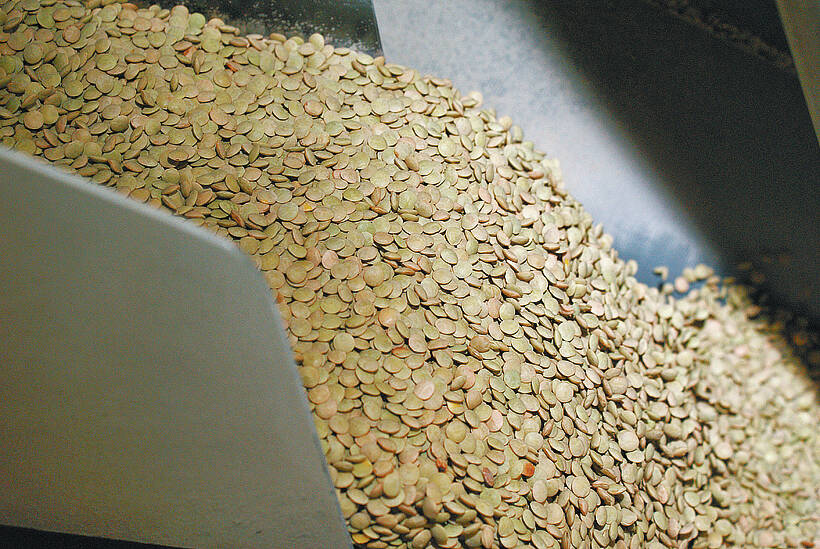Special crops analysts say pea farmers may have to begrudgingly sell a portion of their harvest into feed markets in 2008-09.
Burdensome supply, wary buyers and the global credit crunch are combining to create an environment where Agriculture Canada is forecasting 600,000 tonnes of pea carryout and an uncomfortable 19 percent stocks-to-use ratio.
At least one market watcher is forecasting an even larger carryout. Brenda Tjaden-Lepp, chief analyst with Farmlink Marketing Solutions, predicts 736,000 tonnes of leftover peas and a 24 percent stocks-to-use ratio.
She wouldn’t want to be the farmer selling into low-priced European feed markets but that could be a necessary evil.
Read Also

Green lentil market oversupplied
Farmers in Western Canada can expect price pressure on their new crop of green lentils, as the available supplies among the world’s major lentil-growing nations increase significantly.
“That would help alleviate this ballooning carryout issue considerably.”
Pea exports are off to a slow start. Farmlink estimates they are as much as 200,000 tonnes off last year’s pace. That is a concern because producers harvested 3.5 million tonnes of the pulse this year, which is 20 percent larger than the 2007-08 crop.
Simultaneous with Canada’s bin-busting harvest was a global slowdown in demand brought about by freefalling commodity prices and a credit crunch that is restricting the ability to engage in international trade.
In India, Canada’s largest pea customer, buyers are holding onto peas they bought at much higher values earlier this year. They are reluctant to sell at a loss into local markets and are therefore delaying the purchase of new supplies.
Buyers in Pakistan and China have been walking away from shipments, leaving a further backlog in the system.
Farmlink has penciled in 2.175 million tonnes of exports, rivaling last year’s movement of 2.2 million tonnes. The record was 2.6 million tonnes in 2005-06, a good portion of which was sold into European feed markets.
“I’m worried that the demand number I’ve got in here right now is unachievable and that the supply number could get bigger,” said Tjaden-Lepp.
Greg Kostal, president of Kostal Ag Consulting, has come to a similar conclusion about the future of this year’s pea market.
“Not all of this (supply) is going to be able to be priced at an edible level. We’re just running out of time,” he said.
That excess supply will either end up in the carryout column of supply and disposition reports, or it will be sold into feed markets as an affordable alternative to feed wheat.
In the past when Canada has had a burdensome pea supply, a lot of product was sold into Spanish feed markets. Kostal said the domestic hog industry, which tends to pay more than Europe, could also consume the excess.
Tjaden-Lepp said sending peas to Spain through Thunder Bay is logistically attractive, but financially unrewarding.
“Nobody wants to see us have to sell peas into there because some farmer is going to be selling at $3 or $3.50 (per bushel).”
But she has been staring at her supply report since September and that is the only alternative she can think of, given the size of this year’s crop and the sluggish start to the season.















